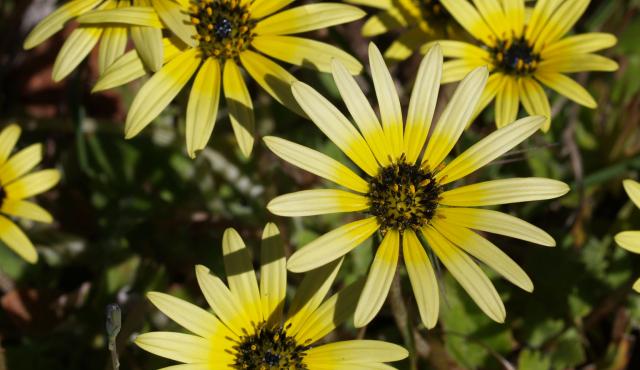
Cape Weed
Arctotheca calendula
Prostrate or ground hugging herb to 30 cm. Grows in rosettes and sends out stolons, helping it to spread across the ground quickly. The leaves are up to 25 cm long and covered with white woolly hairs, especially on their undersides and. Flowerheads to 55 mm in diameter have bright yellow ray petals and a black centre. The florets in the eye (disc) of the daisy are black or dark purple. The area where seeds attach to the head (receptacle) is pitted.
| Details | |
|---|---|
| Flora Type | Herbs |
| Other Common Names | Plain Treasureflower, Cape Dandelion, Cape Marigold |
| Distinctive Features | Distinguished by deeply lobed leaves up to 6 cm wide with 2-7 pairs of lobes and toothed margins at the base of the plant that are downy white underneath. The petal-like ray florets are yellow above and grey-green below. |
| Biology | Annual. This species never forms roots at the nodes. Can reproduce vegetatively or via seed. Seed-bearing plants are most likely to become weedy, taking hold most easily in bare or sparsely vegetated soil or disturbed areas. Seed is dispersed by movement of seed by wind, water or movement in mud. |
| Native Status | Introduced |
| Flowering Time | Sep-Nov |